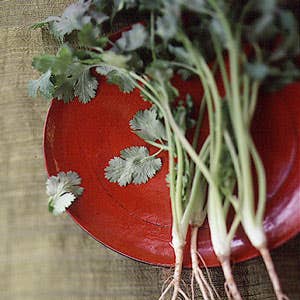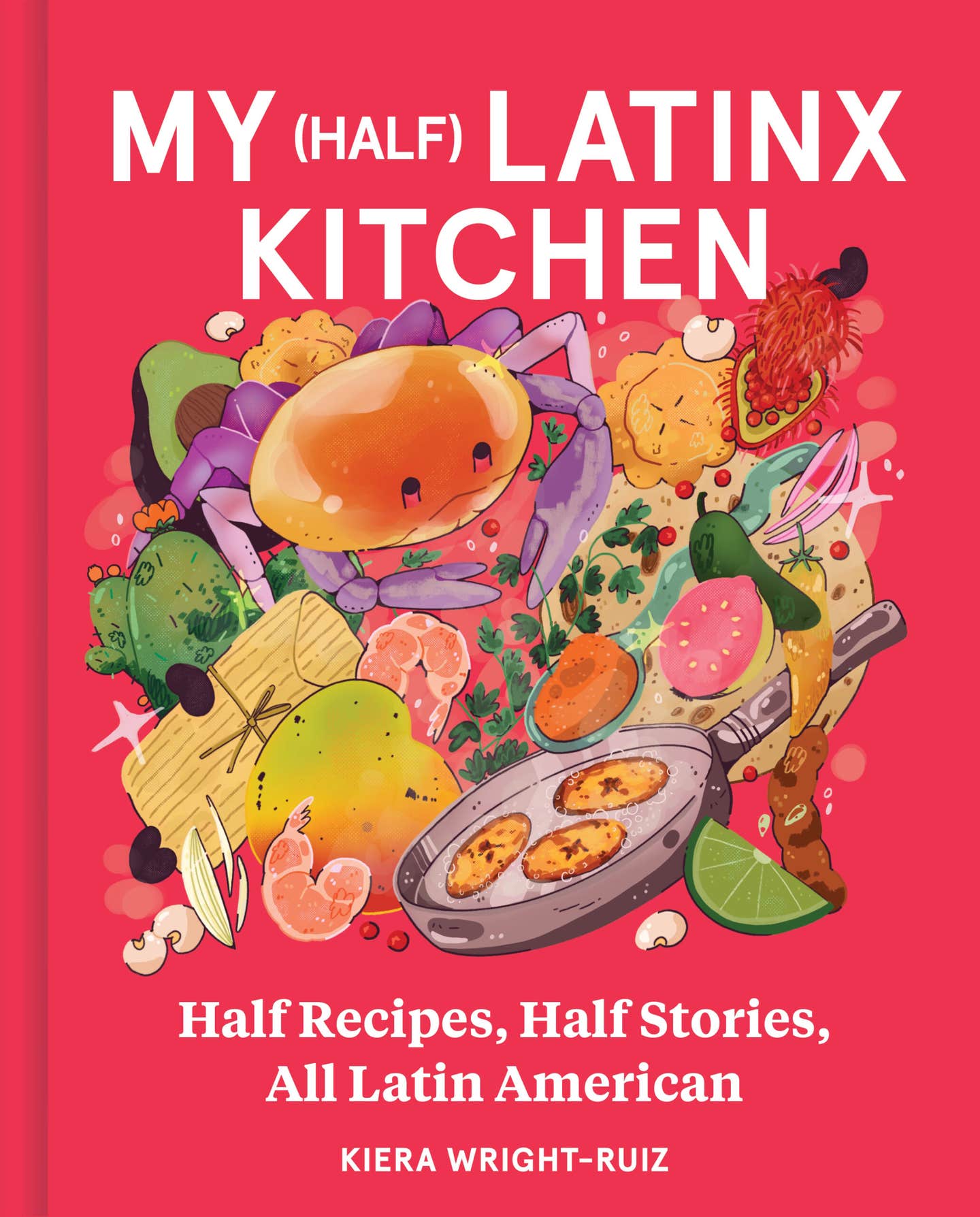
Cool Cilantro
It’s pungent, it soothes scorched palates, and it’s the most popular herb in the world.
I first became aware of the cooling properties of cilantro while sitting on a rooftop terrace in New Delhi. After a blistering pre-monsoon day, the night was breezy, the moon was full, and I was miserable: Halfway through an elaborate vegetarian feast, I felt as though my throat and mouth were on fire. I imagined my face swollen, a frightening scarlet hue—and we still had six more courses to go. Thankfully, we had temporarily retreated to the terrace for a break, and there a plate containing a heap of chopped herbs was presented. My host assured me that they would alleviate my discomfort, so I took a handful and chewed. A pungent, peppery flavor permeated my mouth, a sweat broke out across my forehead, and within seconds, I found relief. "Aha!" my host exclaimed triumphantly. "You are ready for the next curry!"
That evening was a cilantro epiphany. And for me, that's saying something: I was brought up in the Bahamas, where cilantro is used a lot, to add a kick to fresh fruit salad, say, or to temper the strong flavor of lime in conch salad or to balance the tamarind and coconut milk in stewed chicken. I'm no stranger to the herb, in other words. Until that night in India, though, I'd never thought to eat cilantro raw by the fistful, and I had never realized that the herb's astringency was so effective at counteracting the heat of chiles—and also other kinds of heat, apparently. My host that evening told me that Ayurvedic tradition recommends increasing one's consumption of cilantro, among other herbs, as a means of surviving torrid summers. And to think that I had been enjoying cilantro merely for its flavor.
Sometimes known as Chinese parsley (it is related to both parsley and carrots) or fresh coriander (the spice called coriander is the seed of the plant), cilantro—Coriandrum sativum—is the most commonly used fresh herb in the world. With the exception of Japan, certain European countries, and portions of the United States, it is used virtually everywhere.
Historians speculate that cilantro originated in the eastern Mediterranean. Its seeds have been found in the tombs of the pharaohs, and it is believed to have been used for medicinal and culinary purposes for 5,000 years. Some scholars believe that in the Old Testament, when God told Moses to roast lamb and eat it "with bitter herbs", it was cilantro He had in mind. Later, coriander seeds became a staple of the spice trade, distributed along the coastal areas of Spain and northern Africa, past the fingers of Greece (the root of the word coriander _is the Greek _korios, meaning "dirty bug"), overland through the alluvial plains of Turkey and Afghanistan, and on to the far reaches of China and beyond—and most of these places developed a taste for the leaf as well. The Spanish brought the plant to the New World, where it flourished in Central and South America and in what is now the American Southwest. (Oddly enough, the herb never became popular in Spain itself, though it is often used in Portugal.) Today, it is impossible to imagine the cuisines of Morocco, Greece, Georgia (the republic, not the state), China, Thailand, Indonesia, India, and Mexico (to name a few) without it.
Generally speaking, the herb has found a home in cooking traditions that use spices and other flavorings strong enough to stand up to its brash flavor. The idea of cilantro in a delicate cream sauce isn't very appealing, but with spirited partners like chiles, cumin, mint, lemongrass, tamarind, and lime, cilantro shines. In China, whole small branches are left afloat in soups, and a Latina friend of mine from Tucson, Arizona, kisses her fingertips at the memory of the delicate flavor that cilantro stems impart to rice. Madhur Jaffrey, a SAVEUR consulting editor, reports that in India, cilantro leaves are typically ground with mint and salt or with green chiles and lemon to make fresh chutney. "It is the major herb in India, the parsley of India," she says. "In the market, after you buy your vegetables, the vegetable man will throw in a few chiles and a fresh bunch of coriander." And in Thailand and eastern India, the herb's scraggly roots, which harbor an even more potent cilantro flavor, are ground up into curry pastes and sauces.
Although cilantro has long held a preeminent place in the cuisine of the Southwest—the Mexicans brought the herb north and the Pueblos adopted it—it has been slow to take hold elsewhere in the United States. As recently as the '50s, cookbooks described it as "fetid". In the '70s, however, cilantro became a key ingredient in a newly vibrant California cuisine that championed fresh ingredients and borrowed substantially from Asian and Mediterranean culinary traditions. The plant prefers cold weather, bolting to seed too quickly in heat, but it is grown year-round in California, along the central coast from March to mid-November (the peak season), and in the Coachella and surrounding valleys during the winter. A total of 3,500 acres of cilantro were under cultivation in 1996, up from 2,800 acres in 1995, an increase due largely to the popularity of fresh salsa. Still, a horticulturist I know at Mississippi State University in Raymond, Mississippi, complains that even now he has to drive all the way to Jackson, which has a small Mexican community, to get cilantro—and then he has to hunt for it.
The consensus is that cilantro is at its best when raw. "For cooking?" scolded a waitress at a hole-in-the-wall restaurant in L.A.'s Chinatown when I asked her about the cilantro scattered on my vinegared carrots. "No good. No good." And she was right—up to a point. If you saute cilantro, it grows limp, becomes brown, and loses its unique flavor; if you cook it in a tomato-based sauce or some other acidic medium, it turns black. That said, El Paso cookbook writer Aida Gabi-londo, who uses cilantro in her arroz verde (green rice), proves that with gentle, careful cooking, its strong flavor softens like the fading colors on the beach at twilight.
Still, when I think of cilantro, it's the raw flavor I imagine. A few years ago, on a fishing expedition in Mexico, our skipper dropped a hand line down onto a reef and pulled up a shining red snapper. He fileted the fish and cut up the meat, then added an onion, two tomatoes, a couple of jalapeño peppers, and lots of lime and cilantro—which, I noticed, he chopped the same way I do: crudely (when chopped too finely, the leaves become soggy). He set the dish aside while we snorkeled. Upon our return, still streaked with rivulets of salt water, we used plastic cups to scoop up what had by then become ceviche. It was unforgettable. Summer evenings are nice, but I like cilantro most when it's fresh as a morning breeze.
Keep Reading
Continue to Next Story










